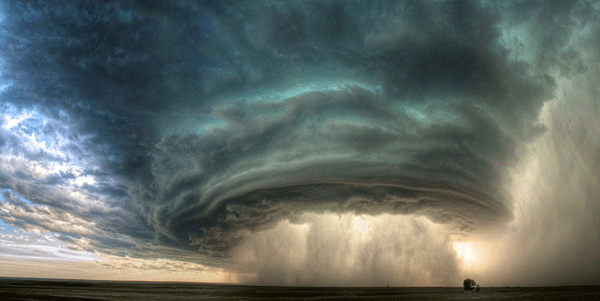Welcome to the GEOS 170, Weather, webpage for the Spring 2017 semester.

This page will be updated every few days as the course progresses...
Spring 2017 Lectures: MWF, 12:00 - 12:50 PM. Location: Holt 352
Office hours: TBD or by appointment. (Please e-mail me to schedule something.)
Click here for a PDF of the Syllabus. Required book: Meteorology Today 11e
Mon., 23, Jan., Lecture: Review the syllabus,
AMS, AGU. Begin Chapter 1: Sun, Earth, atmosphere, and the hydrologic cycle.
Weds., 25, Jan., Lecture: GOES-16, the impact of weather, the composition of the atmosphere, and begin average vertical structure of the atmosphere.
Fri., 27, Jan., Lecture: Average vertical structure of the atmosphere and atmospheric technologies such as radiosondes, satellites, radars, etc.
Mon., 30, Jan., Discussion of iClickers. Then Lecture: Begin Chapter 2: Energy and warming the earth's atmosphere.
Weds., 1, Feb., Then Lecture: Chapter 2. Phase change, conduction, convection, and advection.
Fri., 3, Feb., Then Lecture: Chapter 2. Radiation and selective absorbers.
Mon., 6, Feb., Lecture: Conclude Chapter 2. Begin Chapter 3: Seasons and Daily Temperature cycle.
Weds., 8, Feb., Paper quiz #1. Then Lecture: Conclude Chapter 3 and begin Chapter 4: Atmospheric humidity.
Fri., 10, Feb., Then Lecture: Continue Chapter 4: atmospheric humidity
Mon., 13, Feb., Lecture: Complete Chapter 4 and begin Chapter 5: Condensation: dew, fog, and clouds.
Weds., 15, Feb., Paper quiz #2. Then Lecture: Continue Chapter 5: types of fog and begin clouds.
Fri., 17, Feb., No adding or dropping after this date without Chair's and Dean's approval.
Mon., 20, Feb., Exam #1: Chapters 1-4.
Weds., 22, Feb., Lecture: Complete Chapter 5 on Clouds and begin Chapter 6 on stability and cloud development.
Fri., 24, Feb., Lecture: Absolute stability, neutrality, absolute instability, conditional instability. Introduction to 4 primary ways clouds form.
Mon., 27, Feb., Lecture: Review of stability and cloud formation process 1: small scale convection. Returned Exam #1.
Weds., 1, Mar., Class cancelled.
Fri., 3, Mar., Special assignment on stability and lapse rate due. Lecture: Shallow convection; terrain induced wave clouds, orographic uplift.
Mon., 6, Mar., Lecture: Begin Chapter 7: Precipitation. The curvature and solute effects, and collision and coalescence process.
Weds., 8, Mar.,Lecture: Continue Chapter 7: Ice-crystal or Bergeron Process. Begin precipitation types.
Fri., 10, Mar., Paper quiz #3. Lecture: Complete Chapter 7: types of precipitation. Begin Chapter 8: Air pressure and winds
Mon., 13, Mar., Spring break. No classes.
Weds., 15, Mar., Spring break. No classes.
Fri., 17, Mar., Spring break. No classes.
Mon., 20, Mar., Lecture: Chapter 8: Pressure gradient, pressure gradient force, direct thermal circ., surface weather and upper air charts
Weds., 22, Mar., Lecture: Chapter 8: Geostrophic balance and balance of forces in the friction layer.
Fri., 24, Mar., Paper quiz #4. Lecture: Complete Chapter 8, Begin Chapter 9: Small-scale wind systems.
Mon., 27, Mar., Class cancelled.
Weds., 29, Mar., Class cancelled.
Fri., 31, Mar., Cesar Chavez Day. No classes.
Mon., 3, Apr., Exam #2: Chapters 5-8.
Weds., 5, Apr., Lecture: Chapter 9: Planetary boundary layer, turbulence, waves, aeolian processes, adjustment of flow over lakes.
Fri., 7, Apr., Lecture: Momentum, molecular and eddy viscosities, wind waves, swell, sea-breeze, land-breeze, mountain breeze, and valley breeze.
Mon., 10, Apr., Lecture: Wind as a vector, wind symbols on weather maps, katabatic flows, haboobs, and in situ wind sensors.
Weds., 12, Apr., Paper quiz #5. Lecture: Conclude Chapter 9: Remote active wind sensing technologies: Doppler radar and lidar.
Fri., 14, Apr., Lecture: Begin Chapter 10: Global winds. Single-cell and 3-cell circulation models and features of it including jet streams.
Mon., 17, Apr., Lecture: Tropospheric and stratospheric polar vortices; quasi-biennial oscillation; wind waves and swell, Ekman spiral and transport.
Weds., 19, Apr., Lecture: Ekman pumping, ocean upwelling, thermocline, El Nino, La Nina, ENSO.
Fri., 21, Apr., Lecture: Conclude Chapter 10 (PDO, NAO, AO), and all of Chapter 11: Air masses and Fronts.
Mon., 24, Apr., Lecture: Begin Chapter 12: Mid-latitude cyclones. Bjerknes, Polar front theory of cyclone development, convergence and divergence.
Weds., 26, Apr., SETs. Lecture: Continue Chapter 12: Structure of mid-latitude cyclones, Rossby waves, short-waves.
Fri., 28, Apr., Lecture: Conclude Chapter 12: advection and vorticity.
Mon., 1, May, Lecture:: Chapter 13: Weather forecasting. Numerical weather prediction: the momentum equations and finite differences.
Weds., 3, May, Lecture: Conclude Chapter 13: Weather forecasting: aspects of Numerical Weather Prediction. parameterizations, Lorenz and chaos, climate models.
Fri., 5, May, Exam #3. Chapters 9 - 13.
Mon., 8, May, Lecture: Review: composition and mean vertical structure of the atmosphere. Temperature, pressure, density, ideal gas law, conduction, convection.
Weds., 10, May, Lecture: Review: radiation, selection absorption by gases, scattering, energy budgets.
Fri., 12, May, Lecture: Review:
Weds., 17 May, Final comprehensive exam: 12:00 to 1:50 PM
Dr. Mayor's page
CSU Chico Atmospheric Lidar Research Group
